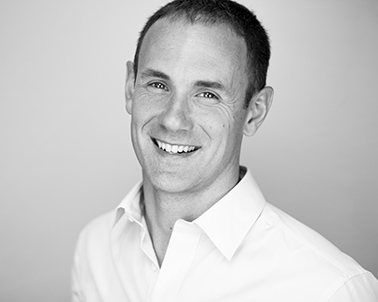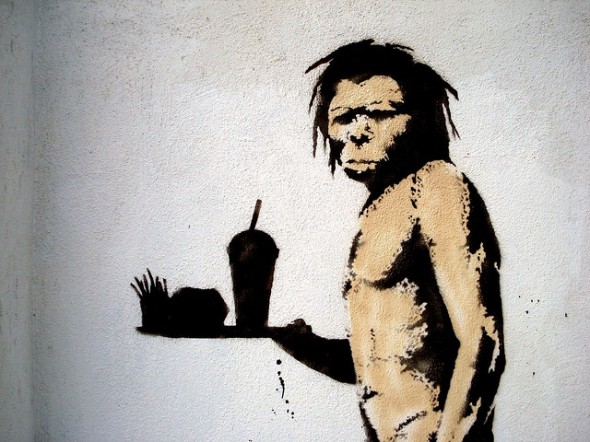Eat By Design has developed as a model, based on biological reality viewed through a philosophical lens of logic and reason. However, it is far from the only approach with similar recommendations for what is considered optimal fuel. In fact, many will recognize the foods as very Paleo-esque – meaning based on the food consumed during the Paleolithic Era and popularized by The Paleo Diet.
How is Eat By Design different from The Paleo Diet?
That’s a great and very important question to answer! Although many of the final recommendations will be similar, the basis for those recommendations will be significantly different. Understanding the rationale for Eating By Design will enable you to think logically and scientifically about your choices and not be relegated to the over simplistic and false assumption that, because a “Caveman” did or didn’t eat it, I should or shouldn’t eat it either.
To first understand the three major shortcomings of The Paleo Diet argument, let’s paraphrase Mat Lalonde, PhD in organic chemistry from Harvard and one of the leading thinkers in this field of ancestral nutrition:
1. “Our ancestors and modern hunter-gatherers consumed a diet that was mostly devoid of grains, legumes, and dairy, and they were virtually free of diseases of civilization. People then make the invalid inference that consuming a diet mostly devoid of grains, legumes, and dairy will thus allow us to be free of diseases of civilization.”
This, of course, is not true. This is only a correlation and does not necessarily mean one is the cause of the other. There are many uncontrolled and confounding factors that are not addressed with this statement.
2. “We have evolved over millions of years without consuming the foods that became readily available only after the advent of agriculture. Hence, we’re not adapted to these foods. This assumes that a species isn’t adapted to a food because it’s never consumed it. However, if you look at the evolutionary record, that’s incorrect. There are plenty of examples throughout evolution where a species discovers novel sources of food and thrive on them.”
A great example is humans and meat. Humans began by eating plants, fruits and bugs, and eventually began to scavenge the bone marrow and brains of carcasses, and the physiology of humans changed to match our new lifestyle choices. Add in fire and cooked plant matter – we shifted to a much smaller gut and a much bigger brain. The rest is, well, history.
While adaptation to a food is the take home point and a core criterion for what is By Design, never consuming a food does not mean that food could never fulfill our nutrient requirements and move us towards optimal cellular function.
3. “Our genes are virtually identical to those of our Paleolithic ancestors – so we should live as they did. It is true, human beings and chimps have virtually identical genomes to the tune of 99.5% but the difference between a human being and a chimp is not in genes, it’s in the expression of the epigenome. Just because two species have similar genes does not mean that they will both thrive in similar environments or with similar food sources.”
As Dr. James Chestnut notes, “We are the genetic expression of our lifestyle choices.”
Our fuel requirement for optimal function is species specific and based on our epigenetic expression. In the end, you’ll find that every human being requires protein, fat and micronutrients – the only question is, what are the best sources to fulfill those nutrient needs? (Check back next week for the answer to this question or join us at our upcoming Eat By Design Seminar for a more comprehensive, step-by-step guide to eating By Design.)
Eat By Design is simply a strategy to fulfill our requirements for fuel based on what, as humans, we are best adapted to, what are the best nutrient dense foods with the least amount of toxicity, and what foods ultimately move us towards a better expression of our current design.
Now we’d like to hear from you. Have you tried the Paleo Diet? What improvements in you health did you notice? What challenges did you face? Share in the comments below!
 Dr. Michael Gibson has committed himself to helping others to live the best life possible. After graduating with a Bachelor of Kinesiology from the University of Western Ontario, he received his Doctor of Chiropractic Degree and Masters of Science in Chiropractic Sports Science from Life University. He is the co-creator of Life By Design, owner of The Wellness Group, and co-owner of CrossFit 613. His passion for empowering families runs deep. After experiencing the loss of his sister due to illness, Michael’s purpose became reaching and teaching as many as possible the foundational principles of an extraordinary life. Since that time he has passionately pursued and been successful in living out his dream. He maintains a busy family chiropractic practice, a full speaking schedule and finds time to implement the principles and practices of Life By Design in his own life.
Dr. Michael Gibson has committed himself to helping others to live the best life possible. After graduating with a Bachelor of Kinesiology from the University of Western Ontario, he received his Doctor of Chiropractic Degree and Masters of Science in Chiropractic Sports Science from Life University. He is the co-creator of Life By Design, owner of The Wellness Group, and co-owner of CrossFit 613. His passion for empowering families runs deep. After experiencing the loss of his sister due to illness, Michael’s purpose became reaching and teaching as many as possible the foundational principles of an extraordinary life. Since that time he has passionately pursued and been successful in living out his dream. He maintains a busy family chiropractic practice, a full speaking schedule and finds time to implement the principles and practices of Life By Design in his own life.
